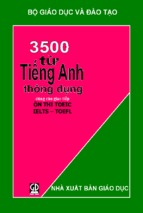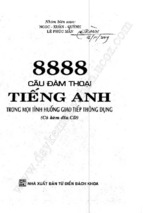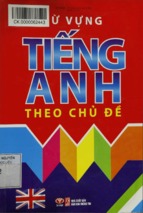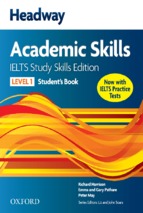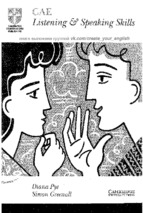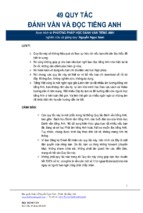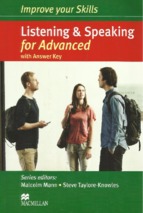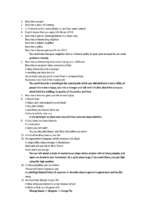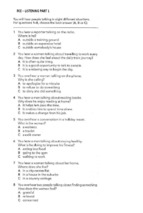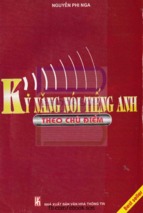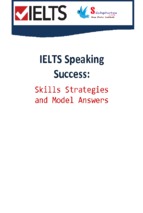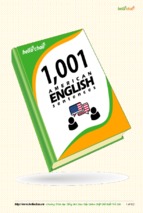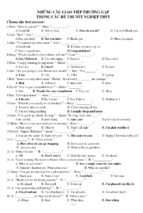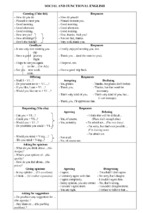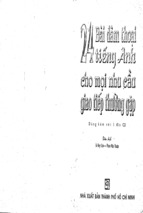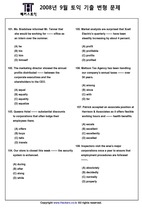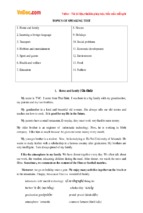VIETNAM NATIONAL UNIVERSITY, HA NOI
UNIVERSITY OF LANGUAGES AND INTERNATIONAL STUDIES
FACULITY OF GRADUATE STUDIES
NGUYEN THI THU KHANH
A CRITICAL DISCOURSE ANALYSIS OF PRESIDENT
TRUMP’S SPEECH TO THE ARAB ISLAMIC AMERICAN
SUMMIT ON MAY, 21st, 2017
(PHÂN TÍCH DIỄN NGÔN PHÊ PHÁN BÀI NÓI CHUYỆN CỦA
TỔNG THỐNG TRUMP TẠI HỘI NGHỊ THƯỢNG ĐỈNH MỸ VÀ
HỒI GIÁO Ả RẬP NGÀY 21/05/2017)
MINOR THESIS
Field
:English Linguistics
Code
:8220201.01
Hanoi, 2018
VIETNAM NATIONAL UNIVERSITY, HA NOI
UNIVERSITY OF LANGUAGES AND INTERNATIONAL STUDIES
FACULITY OF GRADUATE STUDIES
NGUYEN THI THU KHANH
A CRITICAL DISCOURSE ANALYSIS OF PRESIDENT
TRUMP’S SPEECH TO THE ARAB ISLAMIC AMERICAN
SUMMIT ON MAY, 21st, 2017
(PHÂN TÍCH DIỄN NGÔN PHÊ PHÁN BÀI NÓI CHUYỆN CỦA TỔNG
THỐNG TRUMP TẠI HỘI NGHỊ THƯỢNG ĐỈNH MỸ VÀ HỒI GIÁO Ả
RẬP NGÀY 21/05/2017)
MINOR THESIS
Field
:English Linguistics
Code
:8220201.01
Supervisor : Prof. Nguyen Hoa
Hanoi, 2018
DECLARATION OF ORIGINALITY
I hereby certify that the thesis entitled ― A critical discourse analysis of President
Trump‘s speech to the Arab Islamic American Summit on May, 21st, 2017‖ is my
own study in the fulfillment of the requirement for the Degree of Master of Arts at
Faculty of Post-Graduate Studies, University of Languages and International
Studies, Vietnam National University, Hanoi.
ACKNOWLEDGEMENTS
It would not have been possible to complete this thesis without the kind supports
and helps of many people.
First and foremost, I express the greatest gratitude to my enthusiastic supervisor,
Prof. Nguyen Hoa, for his guidance and constant supervision as well as providing
necessary information regarding the study in the completion of this thesis.
My high appreciation also goes to all my lecturers and officers from Faculty of
Post-Graduate Studies, University of Languages and International Studies, Vietnam
National University, who facilitated in the most possible way during my whole
course of studying.
I have made efforts in this thesis. I would like to take this opportunity to express my
deepest gratitude and sincerest thanks to all of them.
Finally, I wish to say sincerest thanks to my family and friends who have
encouraged and assisted me during the process of my writing this paper.
Hanoi, March, 2018
Nguyen Thi Thu Khanh
i
TABLE OF CONTENT
DECLARATION OF ORIGINALITY
ACKNOWLEDGEMENTS ....................................................................................... i
ABSTRACT ............................................................................................................... v
LIST OF FIGURES AND TABLES ....................................................................... vi
LIST OF ABBREVIATIONS.................................................................................vii
PART I: INTRODUCTION ..................................................................................... 1
1. Rationale of the study ............................................................................................. 1
2. Aims of the study .................................................................................................... 2
3. Scope of the study ................................................................................................... 3
4. The significance of thesis ....................................................................................... 3
5. Methodology of the study ....................................................................................... 4
6. Background of the data ........................................................................................... 4
7. Structure of the study .............................................................................................. 5
PART II: DEVELOPMENT .................................................................................... 7
CHAPTER I: LITERATURE REVIEW ................................................................ 7
1. Definition of key terms ...........................................................................................7
1.1. What is discourse? .............................................................................................. 7
1.1.1. Discourse .......................................................................................................... 7
1.1.2. Political discourse ............................................................................................ 8
1.2. What is CDA?..................................................................................................... 8
1.3. Power in language ............................................................................................ 10
1.4. Language and ideology .................................................................................... 11
2. The review of previous researches .......................................................................12
CHAPTER 2: METHODOLOGY ........................................................................ 14
2.1. Data................................................................................................................... 14
2.2. Procedure .......................................................................................................... 14
2.2.1. Fairclough‘s analytical framework ................................................................ 14
2.2.1.1. Description ...................................................................................................15
ii
2.2.1.2. Interpretation ................................................................................................17
2.2.1.3. Explanation ..................................................................................................17
2.2.2. Systemic Functional Grammar (SFG) and its roles in CDA ........................... 18
2.2.2.1.Ideational Function........................................................................................19
2.2.2.2. Interpersonal Function .................................................................................20
2.2.2.3. Textual Function ..........................................................................................20
2.2.2.4. Thematic system...........................................................................................20
CHAPTER 3: FINDINGS AND DISCUSSION ................................................... 22
3.1. Text (Description) ............................................................................................22
3.1.1. The structure of the text .................................................................................22
3.1.2. Vocabulary ..................................................................................................... 26
3.1.2.1. Experiential value of words .........................................................................26
3.1.2.2. The relational value of words ......................................................................29
3.1.2.3. The expressive value of words .....................................................................30
3.1.2.4. Metaphors .....................................................................................................31
3.1.3. Grammar ......................................................................................................... 32
3.1.3.1. The use of personal pronouns ‗I‘, ‗we‘ and ‗you‘ .......................................32
3.1.3.2. Passive/active Voice ....................................................................................34
3.1.3.3. Mode of sentences ........................................................................................34
3.1.3.4. Modality .......................................................................................................35
3.1.3.5. Connective value of text ..............................................................................37
3.1.3.6. Transitivity system (process and participants) .............................................38
3.1.4. Textual analysis ............................................................................................... 40
3.2. Interpretation(Interaction) ................................................................................ 41
3.2.1. Situational context .......................................................................................... 41
3.2.2. Speech acts ..................................................................................................... 42
3.2.3. Inter-textual context and presupposition ........................................................ 44
3.3. Explanation (Context) ......................................................................................44
iii
PART III: CONCLUSION ..................................................................................... 46
1) Summary and conclusion ...................................................................................... 46
2) Limitation of the study.......................................................................................... 48
3) Suggestions for further study ................................................................................ 48
REFERENCES ........................................................................................................ 49
APPENDIXES ......................................................................................................... 50
Appendix 1 ................................................................................................................ 50
President Trump‘s Speech to the Arab Islamic American Summit .......................... 50
Appendix 2: Content Analysis .................................................................................. 60
Appendix 3: Transitivity Analysis in detail .............................................................. 68
Appendix 4: Speech act analysis ............................................................................... 75
iv
ABSTRACT
In my study, I employ Fairclough‘s theoretical framework and Halliday‘s Systemic
Functional Grammar to analyze a case study which is a political speech named
―President Trump‘s Speech to the Arab Islamic American Summit‖. The study aims
at deciphering the relationship between language, ideologies and power behind the
discourse. To fulfill above mentioned purposes, the linguistic strategies are
analyzed to see how the ideologies of speech are constructed. The result after
analyzing this discourse draws out the major findings that language is not only
shaped by the society around it, but an effective tool to convey ideas and at the
same time affects the thinking of the hearers and the society. Language constructs
one‘s themes or ideologies. By analyzing this case study, it can be seen that Trump
has flexibly used his linguistic strategies to get his opinions across and persuade the
audience to action according to his policies.
v
LIST OF FIGURES AND TABLES
Figure1. The Three-Dimensional view of discourse [adapted from Fairclough,
Norman. 1992. Discourse and Social Change (Page 93, Figure 5-2). Cambridge:
Polity Press]. ............................................................................................................. 15
Figure 2: Explaination ( Fairclough, 2001:136) ............................................................... 18
Table 1:The distribution of ‗I‘, ‗we‘, and ‗you‘................................................................... 32
Table 2: Distribution of modal verbs ...................................................................................... 36
Table 3: Summary of Process types ........................................................................................ 38
Table 4:Transitivity analysis of the speech ........................................................................... 38
Table 5: The distribution of speech act.................................................................................. 42
vi
LIST OF ABBREVIATIONS
CDA
Critical Discourse Analysis
PDA
Political Discourse Analysis
CL
Critical linguistics
SFG
Systematic Functional Grammar
vii
PART I: INTRODUCTION
1. Rationale of the study
Language plays an important role in our lives. We use language to communicate
with each other and to express our attitudes to the world around us. In other words,
language is a communicative tool through which we convey our messages and ideas
with one another. We can communicate effectively by using our words, gestures
and tone of voice in a variety of situations. Therefore, language is the voice of each
person and through using language, the ideas and power of speaker are revealed.
The addresses of political leaders are convincing evidences for the relationship
between the thoughts, language and power.
Politicians usually use their own linguistic strategies to make well-prepared and
persuasive speeches. Additionally, oratorical skill is one of the most effective tools
to convey messages to audiences with the aim of persuading the public to accept
and support the policies mentioned in speech. The language analysts often choose
talks of powerful figures as the object of their enquiry. The speeches of the
presidents of the United States always receive the attention from linguistic
researchers, critics and the mass media. Remarkably, there are quite a lot studies on
the addresses of the President Obama. President Donald Trump is no exception.
However, Donald Trump is paid more attention to by the world press more because
he has backgrounds as a billionaire and excellent businessman not a politician with
a profound view and distinctive style. President Trump‘s Speech to the Arab Islamic
American Summit is a convincing proof of that. The speech was made on May,21st ,
2017. It is a new step of President Donald Trump about diplomatic strategy between
the United States and the world and he calls to fight extremists and terrorism at
Middle East and Arab Islamic countries at the same time. Besides, this speech also
marks his first foreign visit. Therefore, I am not an exception among people who
pay much attention to the speech. That is the reason why I choose his speech for my
thesis.
1
To analyze the speech, I employ Critical Discourse Analysis (CDA). Critical
Discourse Analysis (CDA) approach views language as a form of social practice.
Through CDA, the relationship between language, power and ideology can be
revealed. Therefore, analyzing President Donald Trump‘s speech in the view of
CDA can reveal the persuasive strategies he used and decipher ideological traits
typical for Donald Trump in his address.
2. Aims of the study
The inclination of CDA is usually towards public speech such as advertisement,
newspaper, political, official documents, laws and regulations. The aim of
employing CDA to analyze such speeches is to explore the relationships between
language, ideology and power. The talks or addresses of political figures are always
rich sources for linguists to exploit, due to the fact that each character has individual
features in applying his or her language expressions as well as intention in speech in
order to persuade the hearers. The study of presidential addresses has not only
attracted the attention of linguists, but also attracted the interests of political
scientists and historians. Especially, the heads of the White House always receive
the concern of world press right after inauguration. After Barack Obama, this year,
President Donald Trump has caught the attention of the world again. Thus, this
study aims at examining the persuasive strategies of President Donald Trump‘s
public speaking. Besides, the study highlights the stylistic techniques employed by
Donald Trump in formal speeches and attempts to reveal main ideologies which
exist in the speech under investigation. In short, there are three main objectives the
study needs to make it clear: employing the principles of CDA to find out
persuasive strategies as well as how Donald Trump convinces audiences to believe
in his ideas and solutions, revealing ideologies used in the speech and the
relationship between language and ideology.
To serve the aim of the study as mentioned, the study necessarily targets the
answers to the following questions:
2
What are Donald Trump‘s themes/ideologies in his speech?
How are his themes/ideologies represented linguistically?
3. Scope of the study
The analysis of Donald Trump‘s speech is limited to the verbal aspects because this
study only focuses on the text of the speech. Thus, some limitations about extra
linguistic factors such as facial expression, eyes contact, etc are not taken into
consideration although they are quite important in the discourse analysis.
Additionally, the address mainly makes closer connection between countries, hence,
there are no political arguments like debating speeches for election. Besides, this
study is only confined to analyzing the chosen speech from a Critical Discourse
Analysis perspective.
4. The significance of thesis
The theoretical significance
The application of CDA theory to analyzing speeches of figures who have influence
in political field, especially presidents as well as politicians of the United State is
not a quite new direction, however, finding linguistic strategies and ideologies of
each person still attracts much attention because each person has a distinctive style
of language. Based on the current theory of CDA, I analyze this speech with the aim
of finding out the relationship between language, ideology and power hidden in the
speech. Through that, this thesis gives suggestions for the next study orientations
about analyzing addresses of famous figures in the political field in particular and
addresses in other fields in general.
The practical significance
In CDA approach, it is hoped that this thesis finds out the mainlinguistic strategies
Donald Trump used to persuade audiences and his ideology in speeches, which
leads to understanding of President Trump and the difference in style of
predecessors and President Trump. In addition, the results of this study also
3
contribute to the effectiveness and feasibility of analyzing political discourse
applied in reality and raise awareness of how language is used to construct
ideologies and power.
5. Methodology of the study
The study uses the analytical framework including three stages of CDA. It is
proposed by Fairclough. In fact, these stages are reflected in the ―three dimensional
method of discourse analysis‖, introduced by Fairclough (1995), namely:
1) Description stage, which is related to the formal properties of the text.
2) Interpretation stage, which is concerned with the relationship between texts
and interaction.
3) Explanation stage, which is concerned with the relationship between
interaction and social context.
The study also uses Systemic Functional Grammar of Halliday which includes the
ideational function, the interpersonal function and the textual function to analyze
grammar as well as words in the speech, which leads to revealing the linguistic
strategies employed in the address.
6. Background of the data
Donald John Trump (born June 14, 1946) is the 45th and current President of the
United States. He has become a president of America since January 20, 2017.
Before entering politics, he was a businessman and television personality. Trump
had long expressed interest in politics. He took part in the presidential race in 2016
as a representative of the Republican party and defeated sixteen opponents in this
battle. Trump won the general election on November 8, 2016 against Hillary
Clinton, a candidate of the Democratic party. He became the oldest and wealthiest
person ever to assume the presidency.
The speech marks a confused stage of Donald Trump, when he gets stuck in the
criticism and observation of America press. According to CNN, this trip has been
4
prepared between difficulties besetting President Trump. Only within a week,
Trump‘s presidency has been even in danger. The White House has suddenly sunk
in the tense atmosphere. It seems to be assumed that Donald Trump has revealed the
secret intelligence to Russian officials. And that reduces Trump‘s political
credentials. At the same time, he has also fired FBI Director, James Comey.
Therefore, a successful trip abroad can be a good solution to the domestic crisis. In
President Trump‘s Speech to the Arab Islamic American Summit, he spoke of
making close-knit partnership between two countries. Besides, Donald Trump calls
people, organizations and countries to conquer extremism and vanquish the forces
of terrorism in order to bring peace, security and prosperity for the nations as well
as the world. He also emphasizes the barbaric results and unspeakable horror the
innocent victims have endured. In sheer numbers, the deadliest toll has been
exacted on the innocent people of Arab, Muslim and Middle Eastern nations. The
Middle East, Saudi Arabia, Egypt and the United Arab Emirates, which are
potential lands about developing tourism and cradle of civilization, are facing with
the threatening of the extremism and terrorism. Hence, through this speech,
Donald Trump wants to convey diplomatic message and hopes countries in the
summit to join strategies to fight the extremism and terrorism with the purpose of
bringing peace, security and prosperity in the whole world in general.
7. Structure of the study
Part I: Introduction, including:
A brief introduction of the study includes the rationale, significance, scope,
methodology, the objectives of the study with two research questions and
background of the data.
Part II: Development
The Development part comprises three chapters:
Chapter 1 named “Literature Review‖ provides the development process of
critical discourse analysis and important features of its theory as well.
5
Chapter 2 entitled “Methodology‖ shows clearly the analytical framework of the
study. I employ Fairclough‘s approach and Systemic Functional Grammar of
Halliday to analyze the speech.
Chapter 3 labeled “Findings and Discussion” discusses the ideologies of Donald
Trump hidden in the speech, the linguistic strategies he uses as well as the link
between language , power and ideology in the speech.
Part III: Conclusion
The conclusion part is to summarize the findings after analyzing the data, make
conclusion of the study and give suggestions for the further study.
6
PART II: DEVELOPMENT
CHAPTER I: LITERATURE REVIEW
With the purpose of providing a literature review as well as laying a firm foundation
for the analysis, this chapter will cover the overview of discourse, critical discourse
analysis, the concepts of power and ideology and review of previous researchers.
This part plays an essential role as a frame of the whole study.
1.
Definition of key terms
1.1.
What is discourse?
Before discussing about critical discourse analysis, it is necessary to get a clear
understanding about data which is analyzed because definitions of ―discourse‖ are
quite various. After that, I will focus on ―political discourse‖ because it relates to
the study.
1.1.1. Discourse
Discourse is language viewed in a certain way, as a part of the social process which
is related to other parts. In other words, discourse is language in its relations with
other elements in the social process. In Language and Power, Fairclough has
mentioned ―discourse as social practice‖. Discourse is a general term, a unit of
language, a speech or any expression of thoughts in a text. Discourse could be any
piece of material that conveys a massage to others or any talks that have interaction
with other people as well as society. Hence, discourse analysis is analyzing
interaction occurring in the context and interaction of process between writers or
producers and readers or listeners by using resource. And these interactions are
taken into consideration under social context.
7
1.1.2. Political discourse
According to Wikipedia, political discourse analysis is a field of discourse analysis
which focuses on discourse in political forums (such as debates, speeches, and
hearing) as the phenomenon of interest.
As indicated by Van Dijk (1998), PDA focuses on the analysis of ―political
discourse‖. Critical-political discourse analysis deals especially with the
reproduction of political power, power abuse, or domination through political
discourse.
According to both Fairclough‘s (1995) and Van Dijk‘s (1993), such an analysis
deals with the discursive conditions and consequences of social and political
inequality that result from such domination.
As such, in political discourse, the content concentrates on political aspect,
therefore, bias usually exists and may have negative or positive impacts on the
thinking of the hearer.
1.2.
What is CDA?
Before Critical Discourse Analysis becomes popular, it has been known as Critical
Linguistic (CL). Critical Linguistic has emerged since the late 1970s, which was
developed by a group of scholars working at University of East Anglia (Fowler et
al., 1979, Kress & Hodge, 1979). Their standpoint about discourse is that there
always exist ideologies of writers hidden in texts and they aim at showing how
ideology and ideological process are deciphered from the producers and the
listeners, by giving a means of analysis on critical linguistic based on Halliday‗s
systematic functional linguistics. Critical Discourse Analysis (CDA) has appeared
when the work Language and Control was published and CDA has been used in the
broad way by linguists as well as scholars. However, the views of CDA are a little
bit different for each linguist, so this study just focuses on the view of famous
scholars in this field.
8
As for Van Dijk(1998), CDA makes a connection between the textual analysis of
language and the social practice analysis . It stresses explaining the cause of
discourse from the aspect of social structure and analyzes hidden power behind
language. The power of the speaker is indicated through language in which they
assist each other to bring the effectiveness of utterance. The user of language does
not function in isolation, but in a set of cultural, social and psychological
frameworks. Therefore, ―critical‖ here is not ―judgmental‖ as many people have
ever thought. The one element which makes CDA different from other forms of
discourse lies in the attribute of ―critical‖. ―Critical‖ in CDA implies exploring the
links between textual structures and their function in interaction within society. Or
according to Nguyen Hoa (2006), ―critical‖ can be made sense that each analyst has
to his own view when analyzing the discourse and always has desire to make a
social change by analyzing social relationship hidden in the discourse.
The relatedness between textual structure and social functions in discourse is quite
complex, thus it is usually opaque. And the duty of Critical Discourse Analysis
(CDA) is making clear this problem. Fairclough (1993: 135) in his definition
perceives CDA as ―discourse analysis which aims to systematically explore often
opaque relationships of causality and determination between (a) discursive
practice, events and texts, and (b) wider social and cultural structures, relations
and processes; to investigate how such practices, events and texts arise out of and
are ideologically shaped by relations of power and struggles over power; and to
explore how the opacity of these relationships between discourse and society is
itself a factor securing power and hegemony‖.
9
Fairclough and Wodak (1997: 271-280) summarize the main tenets of CDA as
follows:
1. CDA addresses social problems
2. Power relations are discursive
3. Discourse constitutes society and culture
4. Discourse does ideological work
5. Discourse is historical
6. The link between text and society is mediated
7. Discourse analysis is interpretive and explanatory
8. Discourse is a form of social action
Van Dijk (2008) states that CDA should always include all dimensions of:
―…Discourse, Cognition and Society – and when possible also a Historical and
Cultural dimension…‖. In addition to this, Wodak argues that the concept of power
and ideology must always figure in CDA (Wodak and Meyer, 2001: 3). This implies
that there are central terms which have to be included in a critical discourse
analysis. In order to account for these, it is necessary to consider the key elements
of CDA in the following.
1.3.
Power in language
According to Wodak (Wodak and Meyer, 2001: 10): ―…language is not powerful
on its own…‖.That is to say, what gives it power is the way it is used by powerful
people. In other words, people with power can help language gain power through
their use of it. Because CDA has a special focus on social change, the concept of
power is in this theoretical framework closely related to dominance. This is
illustrated by van Dijk‘s definition of dominance as seen below: ―The exercise of
social power by elites, institutions or groups that result in social inequality,
including political, cultural, class, ethnic, racial and gender inequality.‖ (Van Dijk
1993: 249f). So, according to Van Dijk, power involves control by groups or
institutions. These groups may constrain or limit the freedom of other groups by
10
- Xem thêm -



